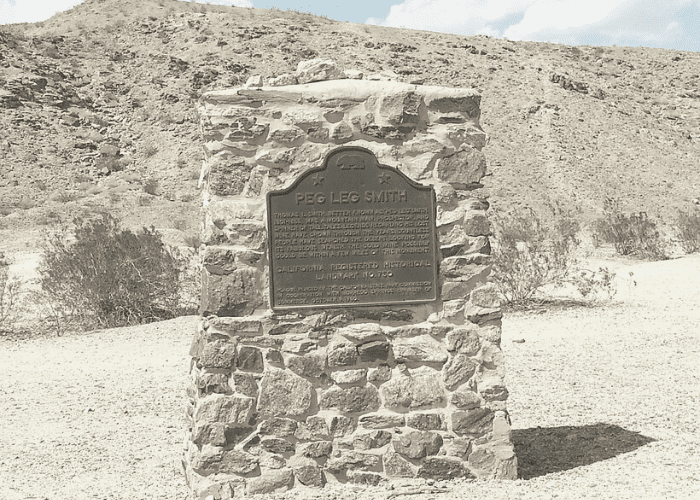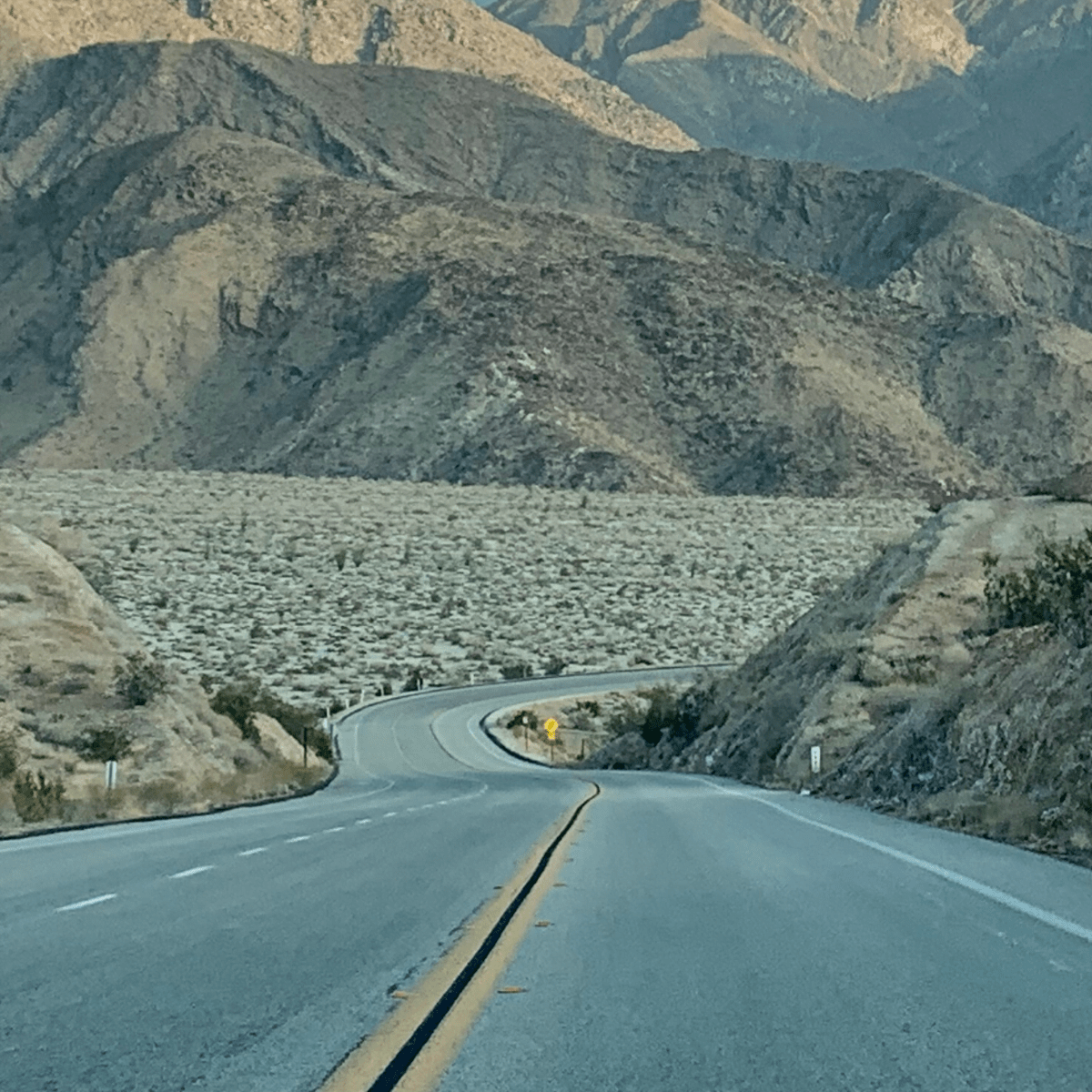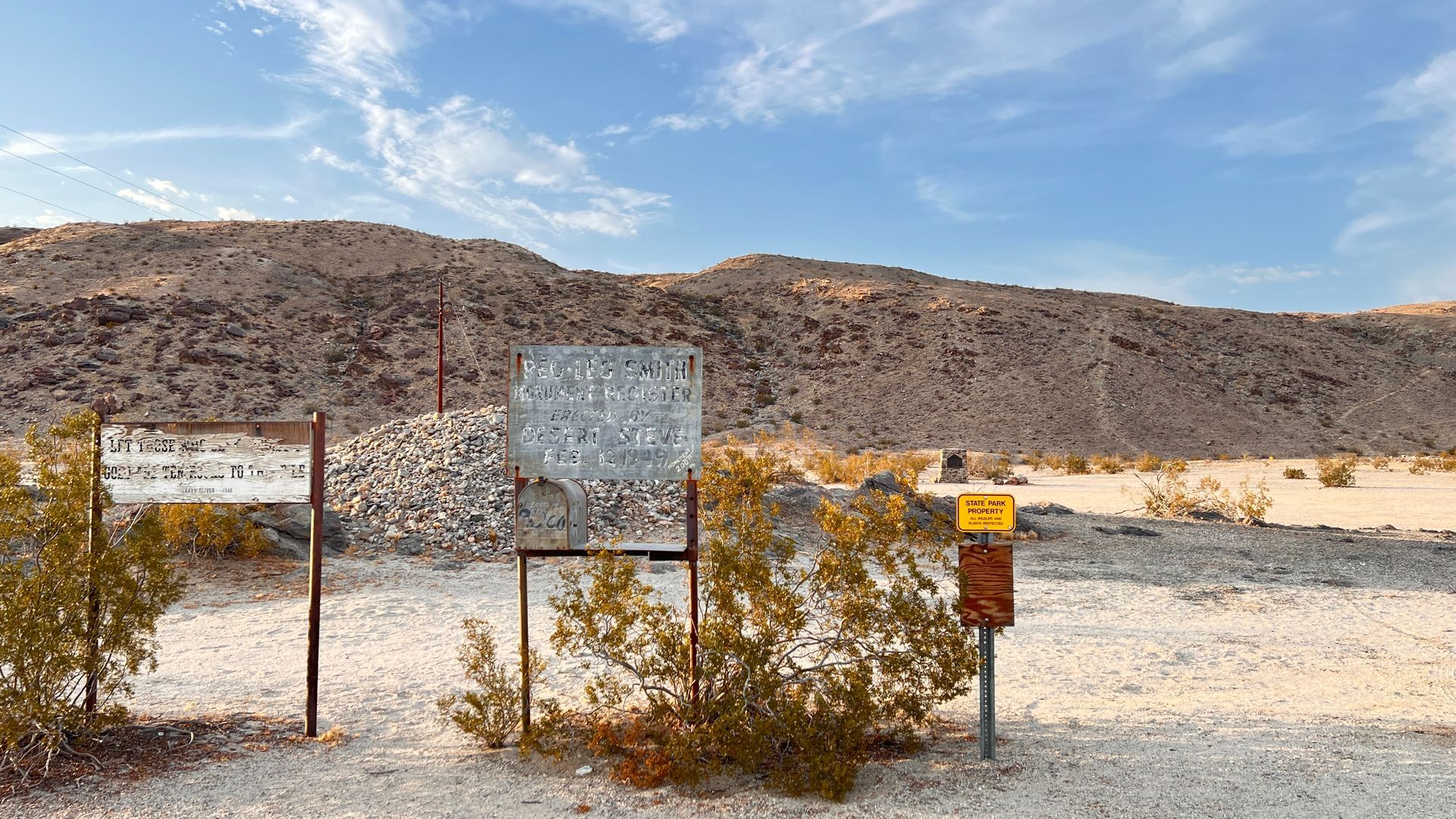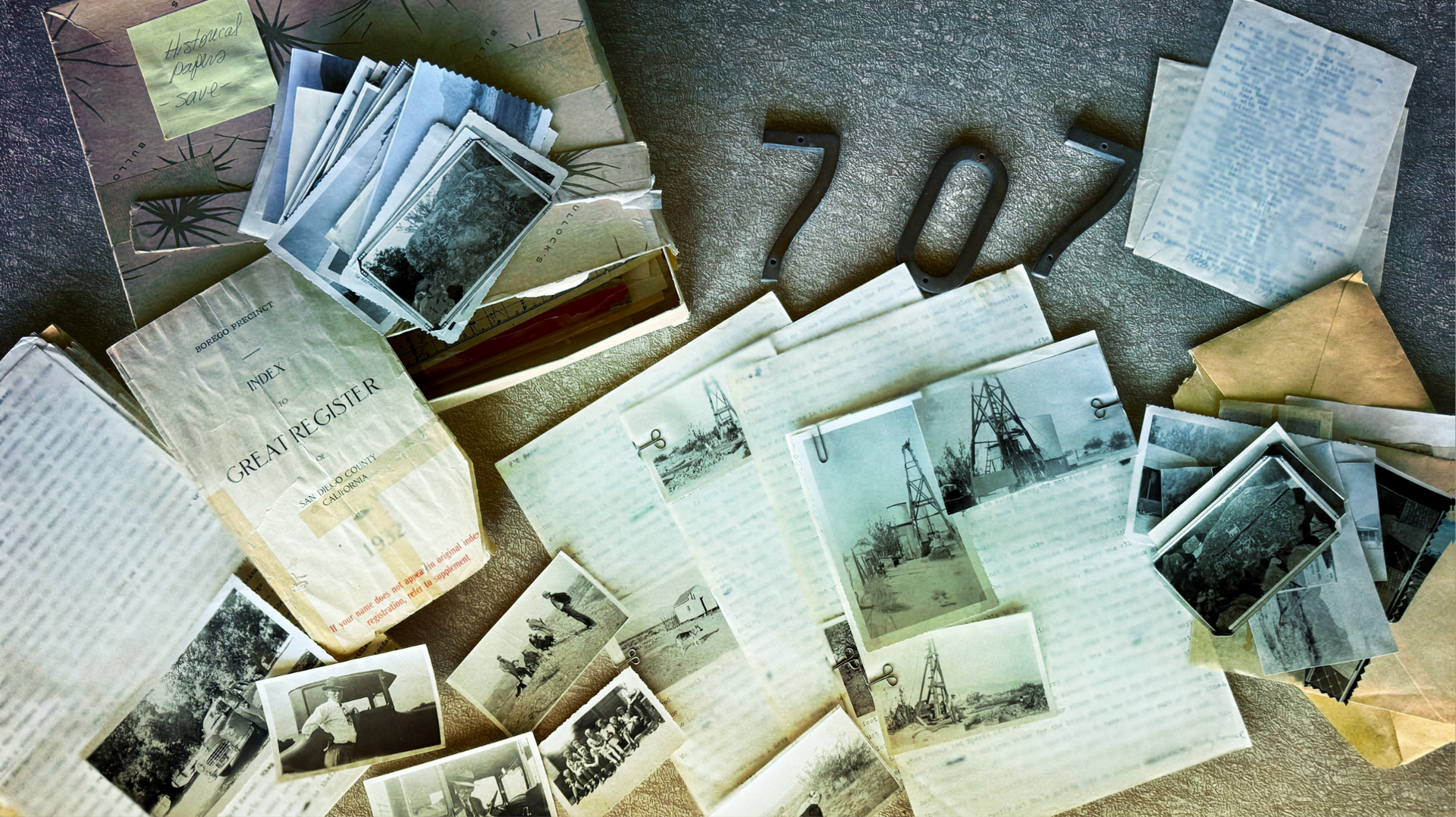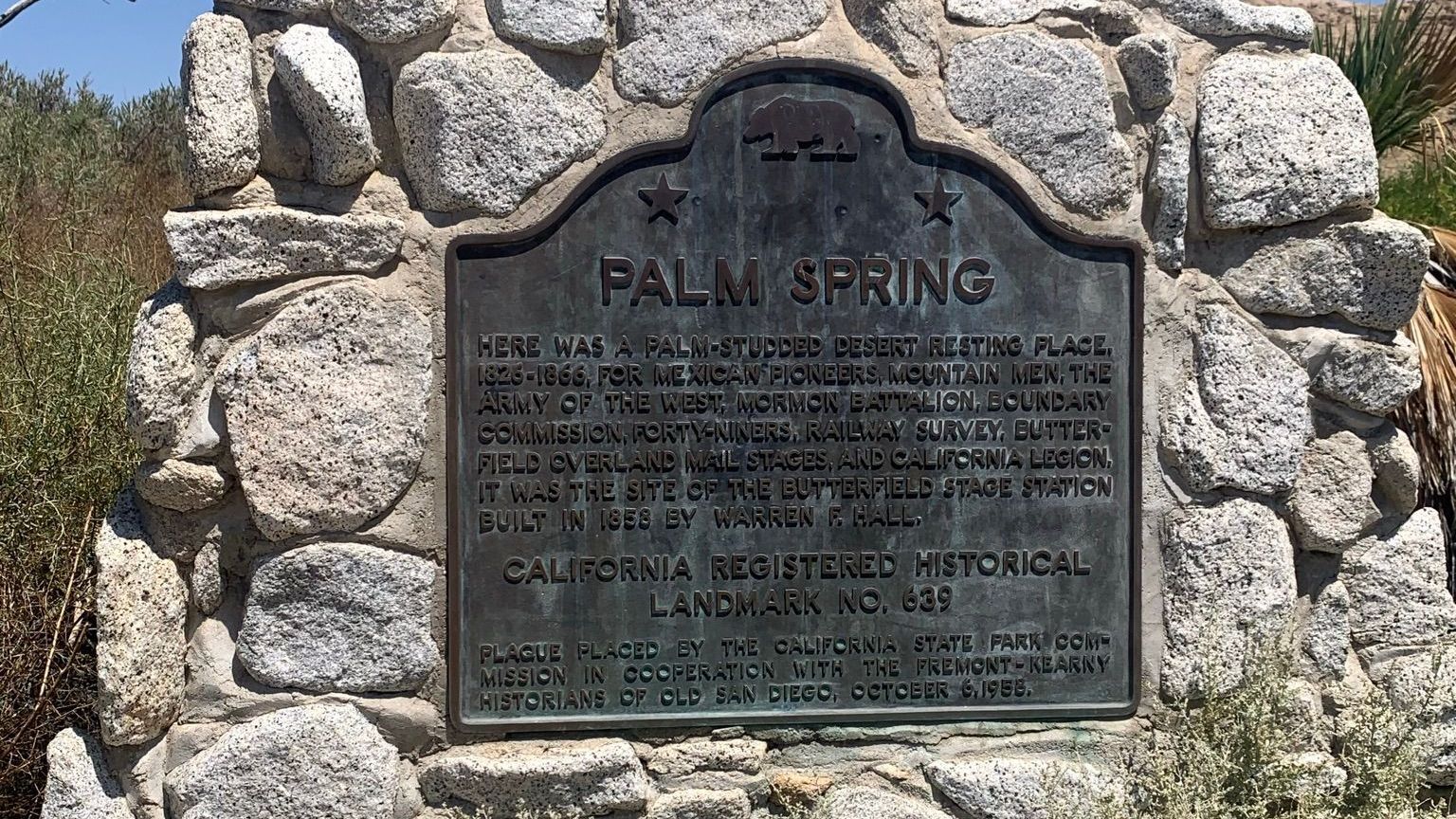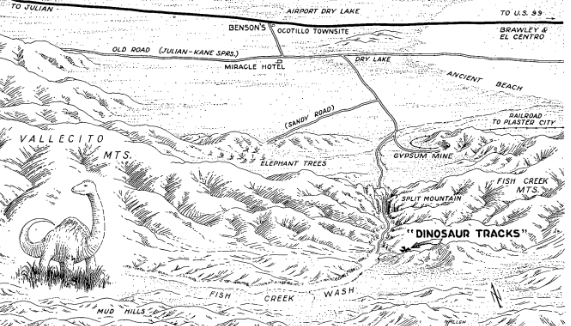Harry Oliver: Borrego Springs' Legendary Desert Rat
Share
Harry Oliver's DESERT RAT SCRAP BOOK - 1950s Spoken Word LP
The Fascinating Tale of a Hollywood Artisan Turned Desert Icon
Borrego Springs, nestled in the heart of the Anza-Borrego Desert, is not just a haven for nature lovers but also a land rich in stories and legends, many of which can be traced back to one remarkable man - Harry Oliver. Known as the "Desert Rat," Oliver's legacy in Borrego Springs is as enduring as the desert sands, captivating the imagination of locals and visitors alike.
Early Hollywood Years: A Foundation for Desert Stories
Before his name became synonymous with desert lore, Harry Oliver carved a niche for himself in Hollywood. From his humble beginnings as a set painter, Oliver rose to prominence in the 1920s and 1930s, winning two Academy Awards for art direction. His creativity and flair for the dramatic set the stage for his later endeavors in Borrego Springs.
Borrego Springs and the Birth of a Desert Legend
In the late 1920s, Harry Oliver's journey took a significant turn as he ventured into the Anza-Borrego Desert. It was here, amidst the arid landscape and under the vast desert sky, that Oliver's alter ego, the "Desert Rat," was born. His fascination with the desert's mystique and his love for storytelling found a perfect home in Borrego Springs.
The Pegleg Smith Liars' Contest: A Legacy of Tall Tales
One of Oliver's most enduring contributions to Borrego Springs is the Pegleg Smith Liars' Contest. This annual event, celebrating the art of tall tales, draws storytellers from far and wide, each vying to weave the most outlandish and entertaining yarns. The contest pays homage to the legendary prospector Thomas "Pegleg" Smith and Oliver's love for whimsical, exaggerated narratives.
Adobe Architecture: Leaving a Mark on the Desert Landscape
Harry Oliver's impact on Borrego Springs wasn't limited to storytelling. His architectural ventures, particularly his adobe structures, reflect his deep connection to the desert. These buildings, designed with a blend of practicality and aesthetic appeal, are testaments to Oliver's artistic vision and his embrace of the desert's rustic charm.
Desert Rat Scrap Book: Chronicling the Soul of the Desert
Perhaps Oliver's most tangible legacy is the "Desert Rat Scrap Book," a publication filled with humor, desert lore, and Oliver's unique perspective on life in Borrego Springs. Through this scrapbook, Oliver immortalized the spirit of the desert, capturing the hearts and minds of readers with his wit and wisdom.
Harry Oliver's Enduring Legacy in Borrego Springs
Today, Harry Oliver is remembered not just as a Hollywood art director but as a cornerstone of Borrego Springs' cultural heritage. His stories, architectural creations, and the Pegleg Smith Liars' Contest continue to be celebrated, keeping the magic of the desert alive. For residents and enthusiasts of Borrego Springs, Harry Oliver remains a symbol of creativity, resilience, and the enduring allure of the desert.
For those interested in the colorful life and times of Harry Oliver, we recommend visiting Phantom Ranch. This comprehensive resource offers detailed information about his multifaceted career, his influence in Borrego Springs, and his enduring legacy as a Desert Rat and master storyteller. Whether you're a history buff, a desert aficionado, or simply curious about one of the most intriguing figures of the American Southwest, Phantom Ranch is a treasure trove of fascinating insights.
Brief Timeline of Harry Oliver's Life and Legacy
- 1888: Harry Oliver is born in Hastings, Minnesota, destined to become a storied figure in the American West.
- Early 1900s: Young Harry begins his working life in a print shop, a job that marks the end of his formal education and the beginning of his practical learning.
- 1910: Harry marries Alice Elizabeth Fernlund. Their union brings forth two daughters, enriching Harry's life with family joys.
- 1911-1941: Harry's career in Hollywood spans 30 years, where he starts as a set painter and rises to become an art director. His artistic vision shapes numerous early Hollywood classics.
- 1920s-1930s: At the pinnacle of his Hollywood career, Harry wins two Academy Awards, cementing his reputation as a master of art direction during the golden era of cinema.
- 1929: Embracing the solitude and mystique of the Anza-Borrego Desert, Harry Oliver adopts the 'Desert Rat' persona. His affinity for storytelling and the desert lifestyle begins to flourish.
- 1930s: Harry's deepening connection to Borrego Springs is reflected in his whimsical and creative ventures, including building the adobe structure Rancho Borego.
- Late 1930s: Harry becomes a central figure in the Borrego Springs community, known for his storytelling and his role in starting the Pegleg Smith Liars' Contest, a tradition that celebrates the tall tales of the desert.
- 1940s: After leaving Hollywood, Harry moves to Thousand Palms, California. There, he constructs Old Fort Oliver, a physical manifestation of his love for the old west and his dedication to the desert life.
- 1950s-1960s: Through his 'Desert Rat Scrap Book', Harry shares anecdotes, humor, and wisdom, offering a window into the soul of the desert and its culture.
- 1973: Harry Oliver passes away on July 4th in Woodland Hills, California, leaving behind a rich tapestry of stories, structures, and lore that continue to inspire.
Harry Oliver's life journey from a Minnesota boy to a celebrated Hollywood art director and a beloved Desert Rat of Borrego Springs showcases a man whose passion and creativity knew no bounds. His legacy, immortalized in the tales he told and the structures he built, endures in the cultural fabric of Borrego Springs and beyond.

